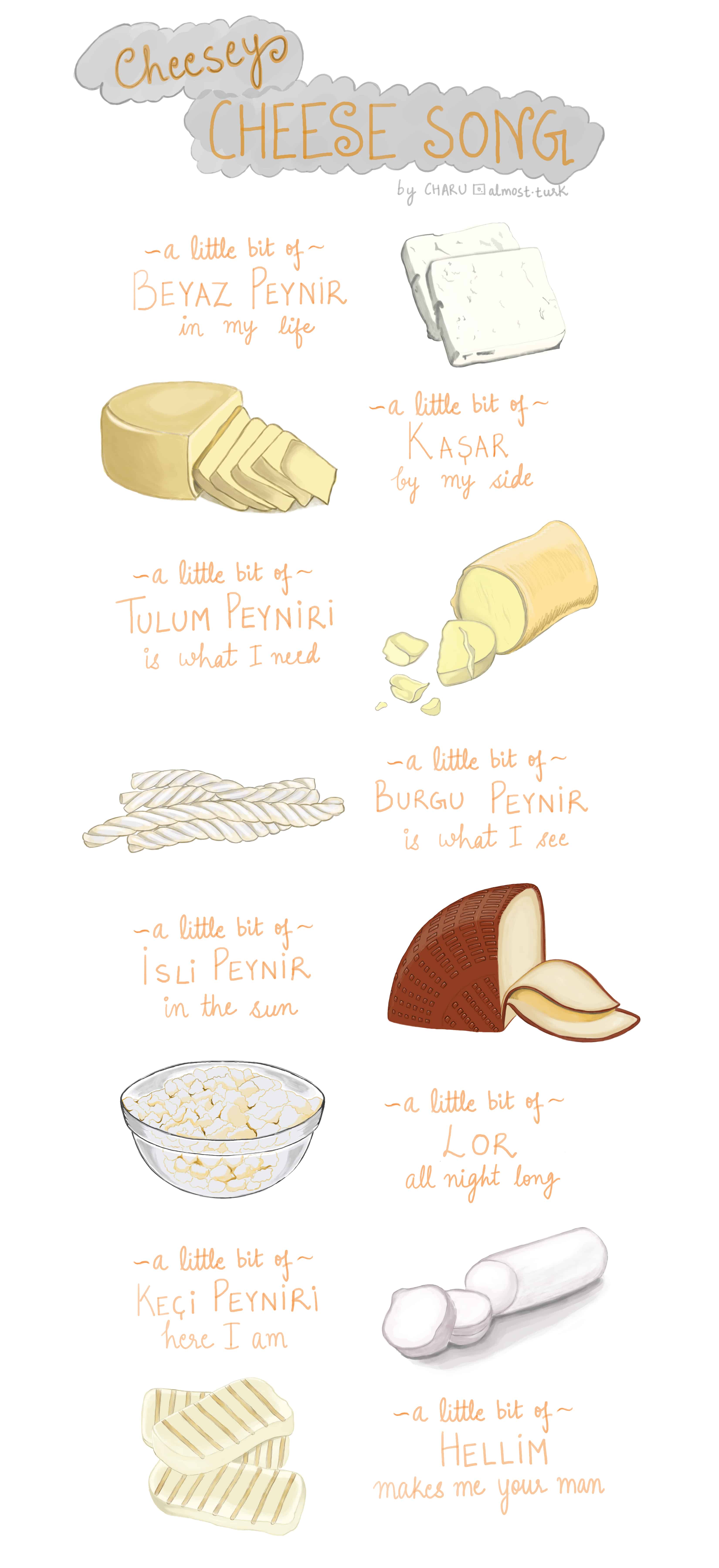The experience of moving to another country can be very similar to having a re-birth. A second life where you set to figure out everything all over again – because the things you already knew may not hold true in the new land. Though it can be a frustrating process, it can also be a process full of marvel. Ever since I have moved to Turkey, I find myself getting surprised, happy and even enchanted with the most ordinary things. And one such thing which is currently occupying my stomach and my mind is the Turkish cheese.
Any visit to a Turkish pazar is incomplete without a visit to the peynir stall. And what a sight it is – big blocks of cheese stacked on top of each other dotted with the occasional handmade sign indicating the name of the cheese and where it’s from. The extravagant display is inviting and intimidating at the same time. It makes the mouth water while the eyes dart from sign to sign and the brain is left in a tizzy failing to process all the information it is getting.
Each type of cheese is distinct in appearance and in taste, and yet all of them are delicious. There are hard cheeses, soft cheeses and cheeses which crumble. The Izmir Tulumu is of the crumbly variety. It is prepared in a bag which is made of goat’s skin. Sounds disgusting but tastes amazing.
Beyaz peynir, which is the Turkish equivalent of Greek Feta cheese, makes an appearance on all breakfast tables across Turkey along with its companion Kaşar. Their neutral milky taste helps to offset both the sweetness of jams and saltiness of olives. These cheese can also be found in other breakfast staples such as sigara boreği (pastry rolls filled with cheese) and menemen (Turkish scrambled eggs).
Hellim is a cheese originated in Cyprus. It is served grilled as an appetizer. Isli peynir is smoked cheese, it has a reddish brown crust around it which keeps it fresh for longer. Burgu peynir is served during breakfast or simply eaten as a snack, it has a rope-like shape reminiscent of the braided örgü peyniri. Lor peyniri is the Turkish cottage cheese. It usually has a very low fat content and is appropriate for adding to salads, pastries and breakfast dishes. Keçi peyniri is simply goat-milk cheese. It is creamier and stronger than most cheese variety and gives off the smell of goat’s milk.
Cheese forms a very important part of the Turkish cuisine. It can very well be eaten in all meals of the day. Some cheese are also used to make traditional desserts such as Künefe, while others pair well with the alcoholic drink Rakı.
I have tried to list the Turkish Cheeses I know about here, but there are so many others which I haven’t discovered yet. But as I mentioned before, my current fascination with Turkish cheese has had a rather unusual effect on me. It has made me a song-writer, and without much further ado, I want to present to you my ode to Turkish Cheese. I apologize in advance for its overwhelming cheesiness. Don’t let it get stuck in your head!











This is awesome! I made a Facebook friendly edit of your drawing and shared it with showing this page as the source. Thanks for being so appreciative of our culture! (Now I have to go eat cheese! :b)
/hugs